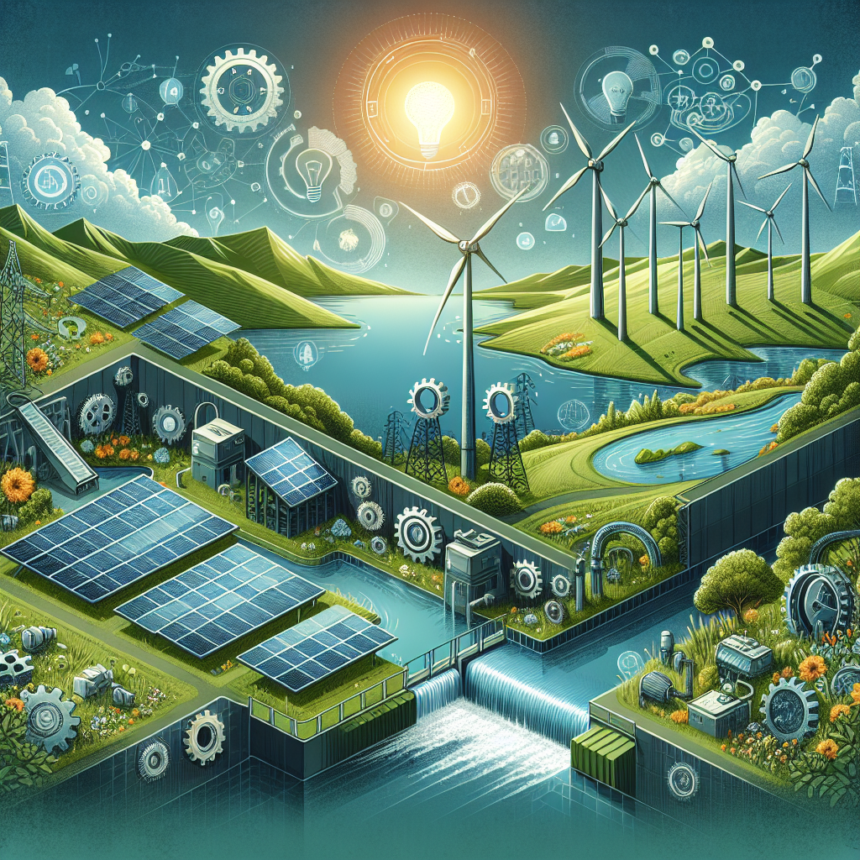Harnessing Nature: The Latest Innovations in Renewable Energy Technology
As global concerns about climate change and energy sustainability reach a fever pitch, the quest for innovative solutions in renewable energy technology is more crucial than ever. The demand for sustainable energy that can replace fossil fuels is leading to remarkable advancements across the globe. This article explores the latest innovations in renewable energy technology, examining how these advancements harness nature’s power more efficiently than ever before.
Solar Energy Innovations
Solar energy has long been one of the most promising renewable energy solutions, and recent innovations take it to the next level. Bifacial solar panels are leading the charge by capturing sunlight from both sides, making them significantly more efficient than traditional panels. These panels can generate up to 30% more energy in certain conditions, significantly boosting their effectiveness without requiring additional space.
Another exciting development is perovskite solar cells, which offer an alternative to traditional silicon-based cells. These cells are more affordable to produce and have shown potential for high efficiency levels. Researchers have achieved efficiencies above 25% in lab settings, paving the way for widespread commercialization that could transform solar energy accessibility.
Wind Energy Breakthroughs
Wind energy technology has also made significant strides. One of the most groundbreaking innovations is the development of larger, more efficient turbine designs. New models can reach heights of over 600 feet and have rotor diameters exceeding 200 feet. This allows turbines to capture more wind energy, particularly in offshore locations where wind speeds are typically higher.
Additionally, floating wind farms are a game-changer in accessing wind energy. These farms can be located in deeper waters, where wind is stronger and more consistent, without the constraints of seabed anchoring. Countries like Norway and the U.S. are leading the way in deploying this technology, significantly harnessing the potential of offshore wind resources.
Energy Storage Solutions
A fundamental challenge with renewable energy is intermittent supply; solar and wind energy production can fluctuate greatly. To tackle this issue, innovations in energy storage technology have become a focal point. Lithium-ion batteries are becoming more efficient and cost-effective, enabling a longer life cycle and greater energy retention.
However, researchers are exploring alternatives like solid-state batteries and flow batteries that promise even better performance. Solid-state batteries, for instance, could offer higher energy densities and increased safety compared to traditional battery systems. Flow batteries, on the other hand, are scalable and can provide long-duration energy storage, essential for stabilizing the grid when renewable energy sources are not producing power.
Green Hydrogen Production
Hydrogen energy is gaining traction as a renewable energy source, particularly green hydrogen produced through electrolysis using renewable energy. Innovations in this area are leading to lower costs and higher efficiencies. Recent advancements in electrolyzer technology are allowing for more efficient hydrogen production, making it a viable option for energy storage and transportation.
Countries rich in renewable resources, like Australia, are exploring hydrogen export initiatives, potentially transforming the global energy landscape. Green hydrogen could play a crucial role in hard-to-decarbonize industries such as steel and cement manufacturing, making it a linchpin in the transition to a low-carbon economy.
Smart Grids and Energy Management
Smart grid technology represents a significant leap in managing renewable resources efficiently. By leveraging advanced technologies like IoT (Internet of Things) devices, smart grids can communicate real-time data on energy consumption, generation, and storage. This allows for better integration of renewable energy sources into the grid, ensuring that supply meets demand more effectively.
Moreover, innovations in AI and machine learning can optimize energy delivery and consumption patterns, making prediction models for energy use even more accurate. Smart grid technology is essential for creating an energy landscape that maximizes the use of renewable sources, reduces losses, and minimizes reliance on fossil fuels.
Conclusion
The latest innovations in renewable energy technology are paving the way for a more sustainable and resilient energy future. From advanced solar panels and wind turbines to innovative energy storage solutions and green hydrogen production, these technologies are harnessing nature’s energy more efficiently than ever. As we continue to improve and invest in these advancements, the dream of a cleaner, greener planet becomes more attainable.
FAQs
1. What is renewable energy?
Renewable energy refers to energy sourced from natural processes that are replenished constantly. This includes solar, wind, hydro, geothermal, and biomass energy.
2. How do bifacial solar panels work?
Bifacial solar panels capture sunlight from both sides due to their transparent back, allowing for increased energy generation compared to traditional solar panels.
3. Why is energy storage important for renewable energy?
Energy storage is crucial because it helps to store excess energy generated during peak production times (e.g., sunny or windy days) for use when energy production is low, ensuring a stable energy supply.
4. What is green hydrogen and why is it important?
Green hydrogen is hydrogen produced through renewable energy sources without carbon emissions. It is important as it can be used as a clean fuel for various applications and in decarbonizing industries.
5. What are smart grids?
Smart grids are electrical grids enhanced with digital technology to monitor and manage energy flow, improving efficiency, reliability, and integration of renewable energy sources into the power supply.









